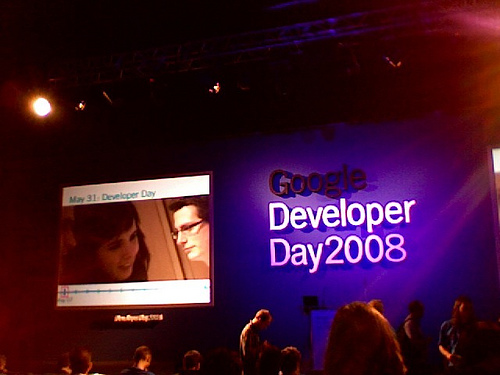 Last week I attended the Google Developer Day in Madrid. It was a very interesting event where Google engineers and gurus from all over the world gave presentations and workshops, a unique opportunity to have an overview of the state of the art in internet technologies today. Among other things, Android, the new open source operating system for mobile phones was introduced and explained. Chrome, the new web browser from Google, was also presented.
Last week I attended the Google Developer Day in Madrid. It was a very interesting event where Google engineers and gurus from all over the world gave presentations and workshops, a unique opportunity to have an overview of the state of the art in internet technologies today. Among other things, Android, the new open source operating system for mobile phones was introduced and explained. Chrome, the new web browser from Google, was also presented.
One of the most inspiring speeches was the one given by Dion Almaer on The Future of Web Applications (watch video, or see presentation). Dion Almaer is one of the fathers of AJAX, the web technology that allows asynchronous communication between the browser and the server to update different parts of a web page without reloading the whole page. This creates more responsive and interactive web applications. For example, in magicGNSS you can run a scenario, monitor the progress banner, and at the same time create new scenarios or delete existing ones. AJAX is behind all this.
Dion’s talk gave me the idea to write about the past of the web and Graphical User Interfaces (GUIs) and about how much things have changed today. Back in 1993 I got my first job with GMV based at ESOC, the European Space Operations Centre in Darmstadt, Germany… But this entry is getting a bit too long, so I will post the rest of the story in this blog some other time.
To be continued…




